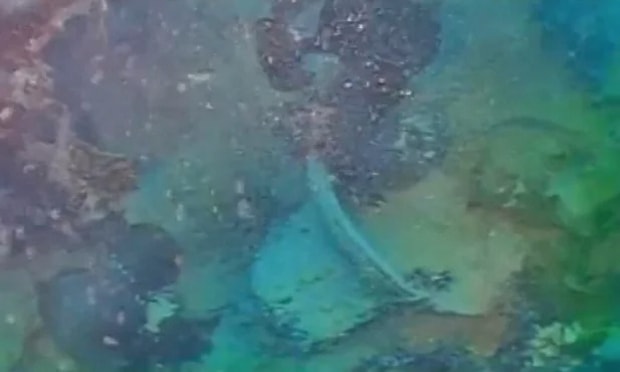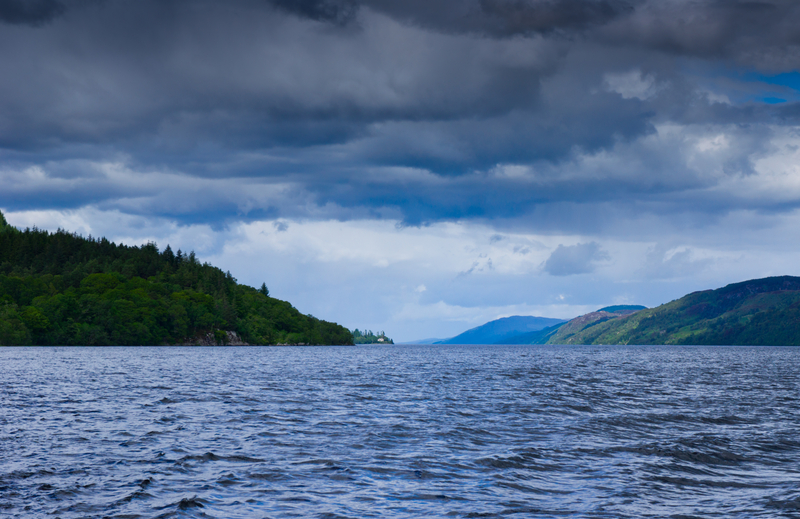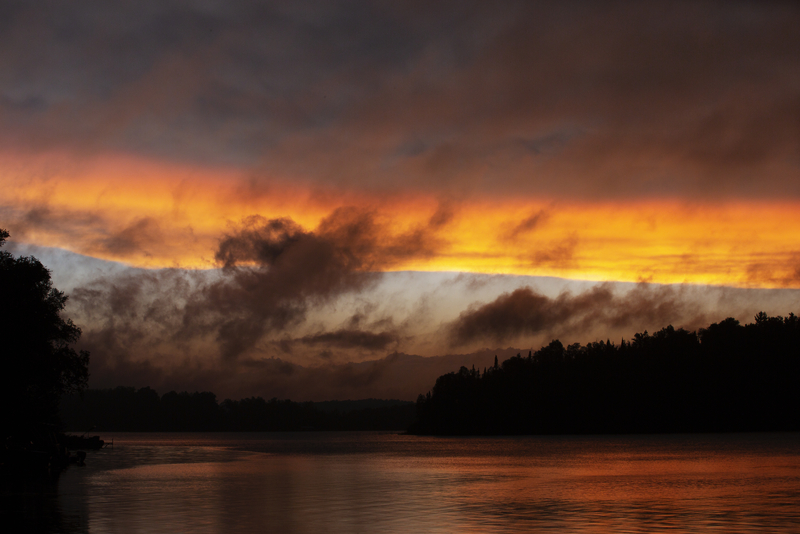Have you ever lost something? Of course you have.
How about this, though: have you ever lost something for a really long time only to discover that it was in a clearly labelled spot all along? Like, "Hey, where's my hammer? Where's my hammer? WHERE IS MY HA... Oh. Wait. It's here. In my toolbox. The one that says, 'Tools.'"
Boy, is our face ever red, right?
Well, in a roundabout way, that's sort of what happened with a long lost British ship, the HMS Terror. Two weeks ago (September 3rd to be precise), and after 168 years of searching, researchers finally discovered the wreck of the Terror. In a place called—wait for it—Terror Bay.
It all seems pretty obvious now
A painting depicts the Erebus and Terror stuck in sea ice. (Getty Embed)
If you're wondering what took them so long to search in this seemingly well-marked spot, there is one thing worth noting. The Terror wasn't supposed to be there.
Back in 1845, two ships, the HMS Erebus and HMS Terror, left Britain. Known as the The Franklin expedition after its captain, Sir John Franklin, these ships were on a mission to search for the Northwest Passage. This was a proposed route across the top of Canada all the way over to the Pacific Ocean and eventually to China. Businessmen wanted to discover such a route because they hoped that it would be a faster way to trade goods with the Asian country. The only problem? Northern Canada was, and is, full of islands and sea ice.
Ultimately, the Franklin expedition ended in disaster. Both ships became stuck in sea ice in 1846. All 129 men on board eventually died in the unforgiving cold of the Arctic. Meanwhile, the Erebus and Terror themselves sank and became lost.
A twist in the plot
Canadian researchers explain what they found after discovering the wreck of the Erebus in 2014. (Getty Embed)
For over a century, the stories went that they were lost in the middle of the Victoria Strait. But all searches came up pretty empty. Occasionally, artifacts and remains were found, but never either ship. Then in 2008, former Prime Minister Stephen Harper renewed a focus on the search for the Franklin ships. Two years ago, the Erebus was finally found, only about 160 km (100 mi.) south of the area in the Victoria Strait where they had reportedly been lost. And now the Terror has been found as well, itself about 96 km (60 mi.) from that last reported location.
This raises questions about what exactly happened to the crew. It was assumed that they had wandered on foot south over the sea ice in an attempt to find safety. But with both ships quite far from Victoria Strait, it is possible that they freed the boats from the ice and tried to sail the way home.
What happened?
A portrait of Sir John Franklin. (Getty Embed)
The extremely cold and dark waters of this part of the ocean have kept both wrecks in exceptional shape. The Terror, which sits 24 m (80 ft.) below the surface, is in even better shape than the Erebus.
“This vessel looks like it was buttoned down tight for winter and it sank,” research director Adrian Schimnowski told the Guardian newspaper. “Everything was shut. Even the windows are still intact. If you could lift this boat out of the water, and pump the water out, it would probably float."
These great conditions also mean that even artifacts like notes and log books could have survived. If discovered, these might have clues to finally solve the mystery of the final days of the Franklin expedition.
 The bell of the HMS Terror lays on the deck of the shipwreck. (©Arctic Research Foundation)
The bell of the HMS Terror lays on the deck of the shipwreck. (©Arctic Research Foundation)









